6 Minutes
Skoda revives the 1000 MBX — as a digital muscle-inspired coupe
Skoda has reimagined one of its most obscure classics with a bold, digital-only study: the 1000 MBX concept. Rendered by designers Antti Mikael Savio and David Stingl as part of Skoda's 'Icons Get a Makeover' series, this virtual reinterpretation swaps the original's modest 1960s silhouette for a low-slung, brutalist-inspired coupe that reads more like a restrained muscle car than a traditional sports car.
The project isn't intended for production. Instead, it celebrates heritage through modern design language while exploring how a small, practical classic could be rethought for an electric future.
From 1960s compact to contemporary three-box profile
The original 1000 MBX, built between 1964 and 1969 with more than 440,000 examples produced, is largely forgotten outside classic-car circles. Skoda's digital revival preserves the two-door coupe concept but updates almost everything else. The concept is clothed in Skoda's new Modern Solid design language: minimal, raw surfaces and architectural proportions meant to evoke brutalist architecture — heavy, pared-back and functional.
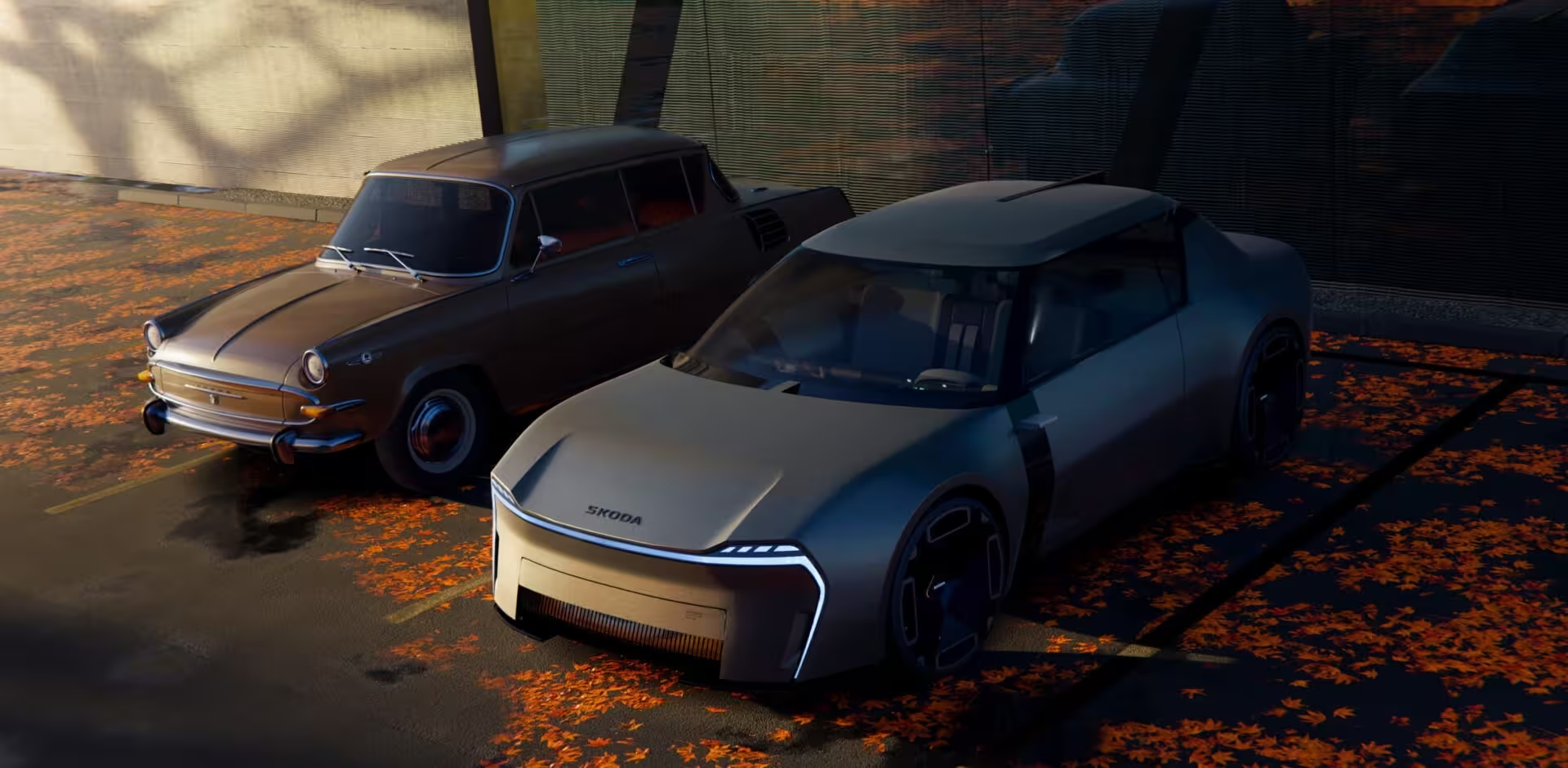
Key exterior highlights:
- Grille-free front end with a continuous LED light signature that forms a stern 'frown'.
- A glass-surrounded cabin that abruptly ends into a short trunk with no conventional rear window (a rear camera replaces it).
- Subtle nods to the original: raised headlights above the hood line, a crease running along the flanks and a familiar C-pillar shape.
- Air suspension and EV-style wheels that lower the car to the ground, reinforcing the muscle-like stance.
The visual effect is deliberate: a car that looks like it could dominate straights without shouting about it. Designers describe the overall aesthetic as 'raw, minimalist and effective' — a clear break from the razor-edged supercar cues we often associate with modern sportiness.
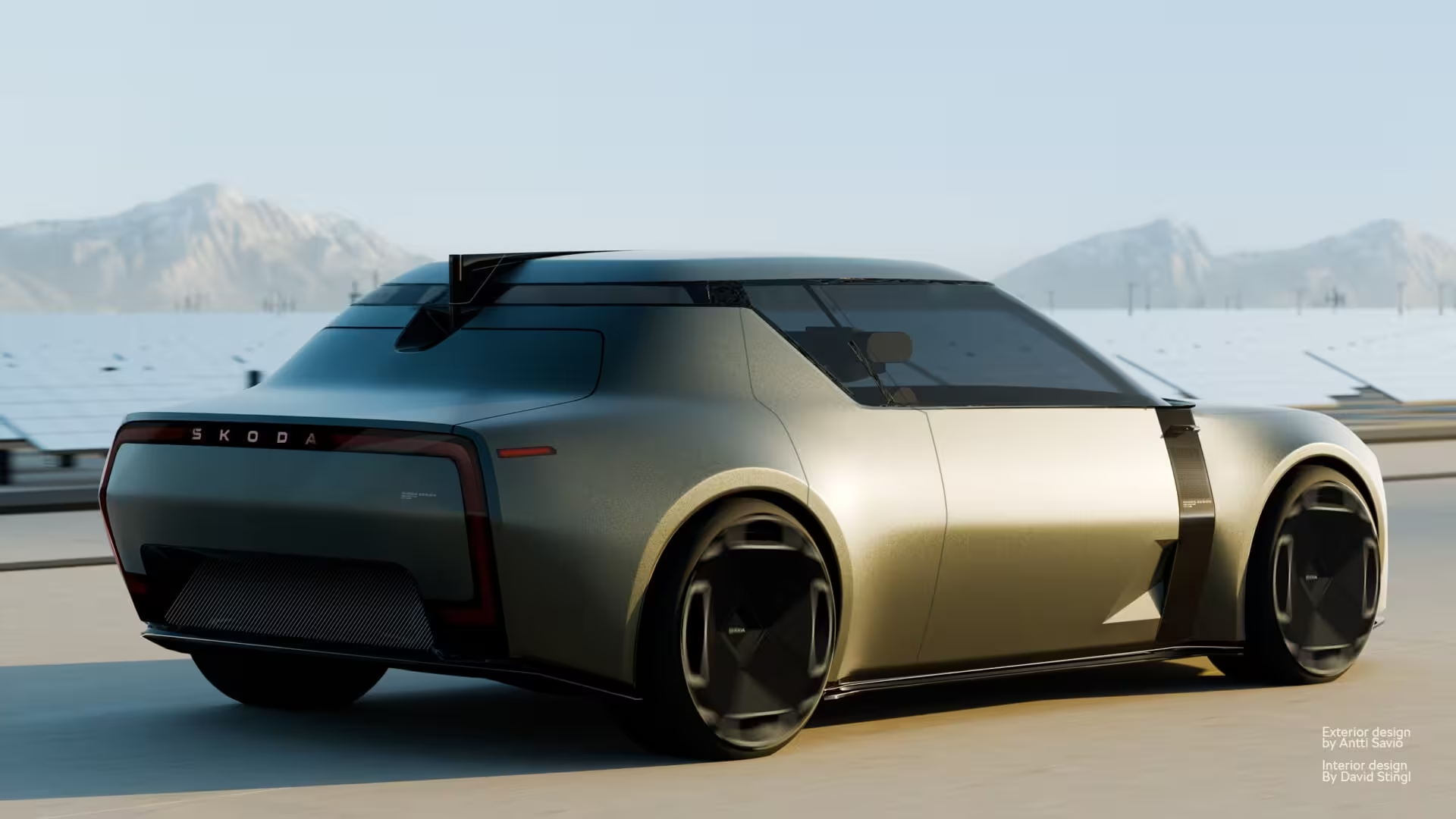
Interior: a practical, convertible 2+2 with an EV mindset
Step inside and the concept's personality shifts from brawn to utility. The cabin was conceived around an electric vehicle architecture: a flat floor enables flexible seating and improved packaging. The interior is a 2+2 layout with a surprising twist:
- Front seats can be merged into a single bench, echoing classic coupe motifs.
- Rear seats are cinema-style tip-ups that fold to expand cargo space, turning the car into a two-seater when needed.
- Two rear-hinged doors improve access to the rear seats and cargo.
Skoda says this arrangement creates enough trunk volume to carry a bicycle once the rear tip-ups are folded — a practical detail that positions the concept as a lifestyle vehicle rather than a pure sports car.
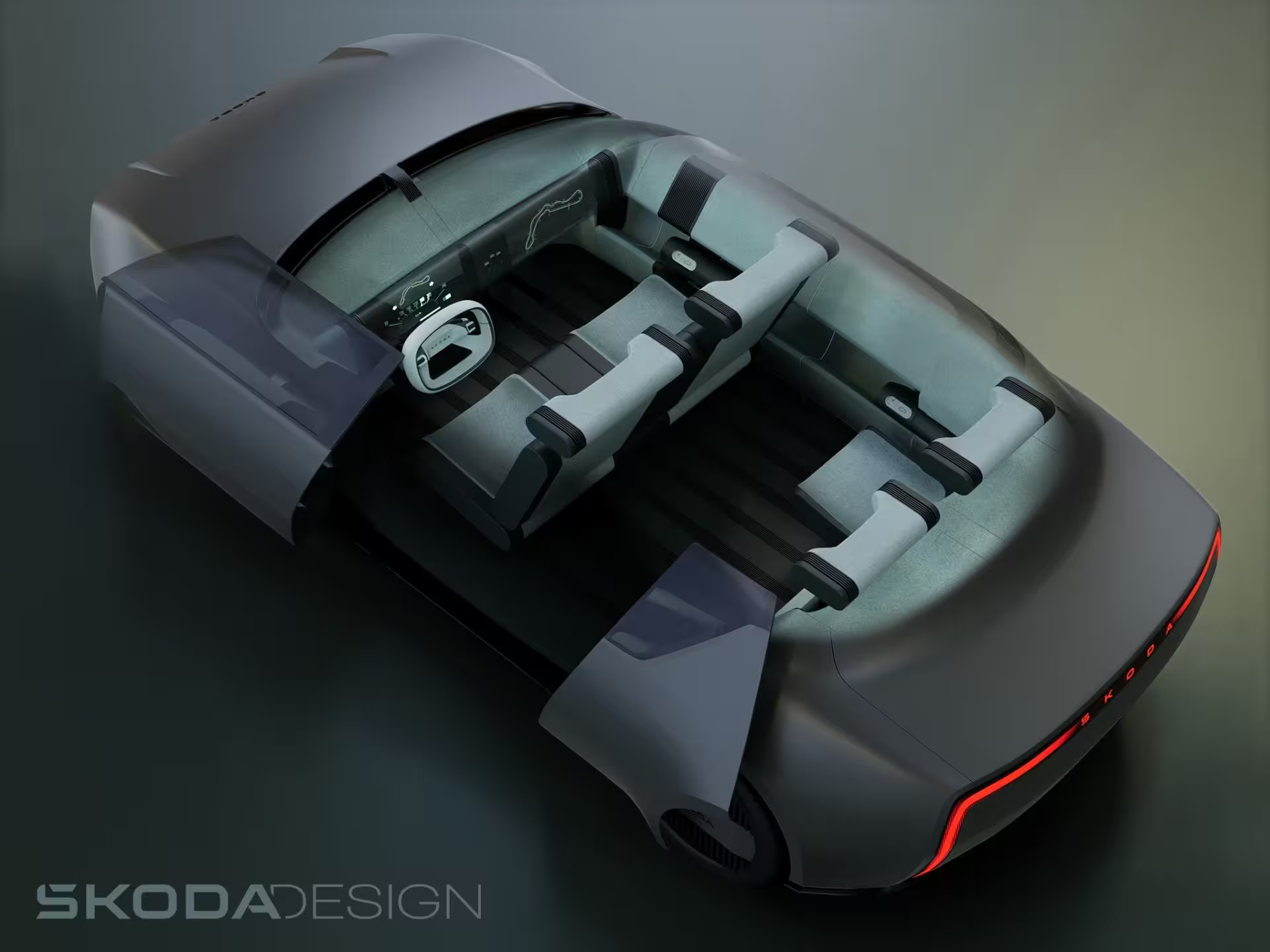
The dashboard is equally futuristic: an all-glass oval module projects information and visuals, with the same oval motif mirrored in the steering wheel and headrests. True to its roots, the MBX concept omits a central console, recalling the sparse instrument layout of the original. Overall, the cabin is cool-toned and deliberately restrained, with ambient lighting used to highlight graphic details rather than overwhelm the space.
Design language, heritage and market context
The 1000 MBX concept sits at the intersection of two contemporary trends: digital heritage projects and EV-oriented packaging. Many brands have been revisiting their iconography in virtual form — a low-cost way to test consumer reaction and refresh brand identity without committing to production. Skoda's Icons Get a Makeover series has previously reimagined models like the 110 R and the Slavia B, and the 1000 MBX follows that formula: visually provocative, technically suggestive, and firmly non-committal about production.
Why do this? For heritage fans, these studies keep obscure models alive in public memory. For designers, they provide a playground to explore how traditional proportions can be reconciled with electric platforms and contemporary comfort demands.
How the MBX concept compares to modern market players
While the MBX is a virtual concept, its design cues align it with several market directions:
- Muscle-coupe looks meet crossover practicality: like some modern coupes and crossovers, it blends aggressive posture with usable cargo space.
- EV-friendly packaging: the flat floor and lack of a center console reflect how electric platforms change cabin architecture.
- Heritage-led styling: similar to the wave of retro-styled concept cars, it prioritizes brand DNA over immediate market fit.
If Skoda ever chose to build something similar, it would likely compete in a niche segment: compact lifestyle coupes that promise both character and utility rather than outright track performance.
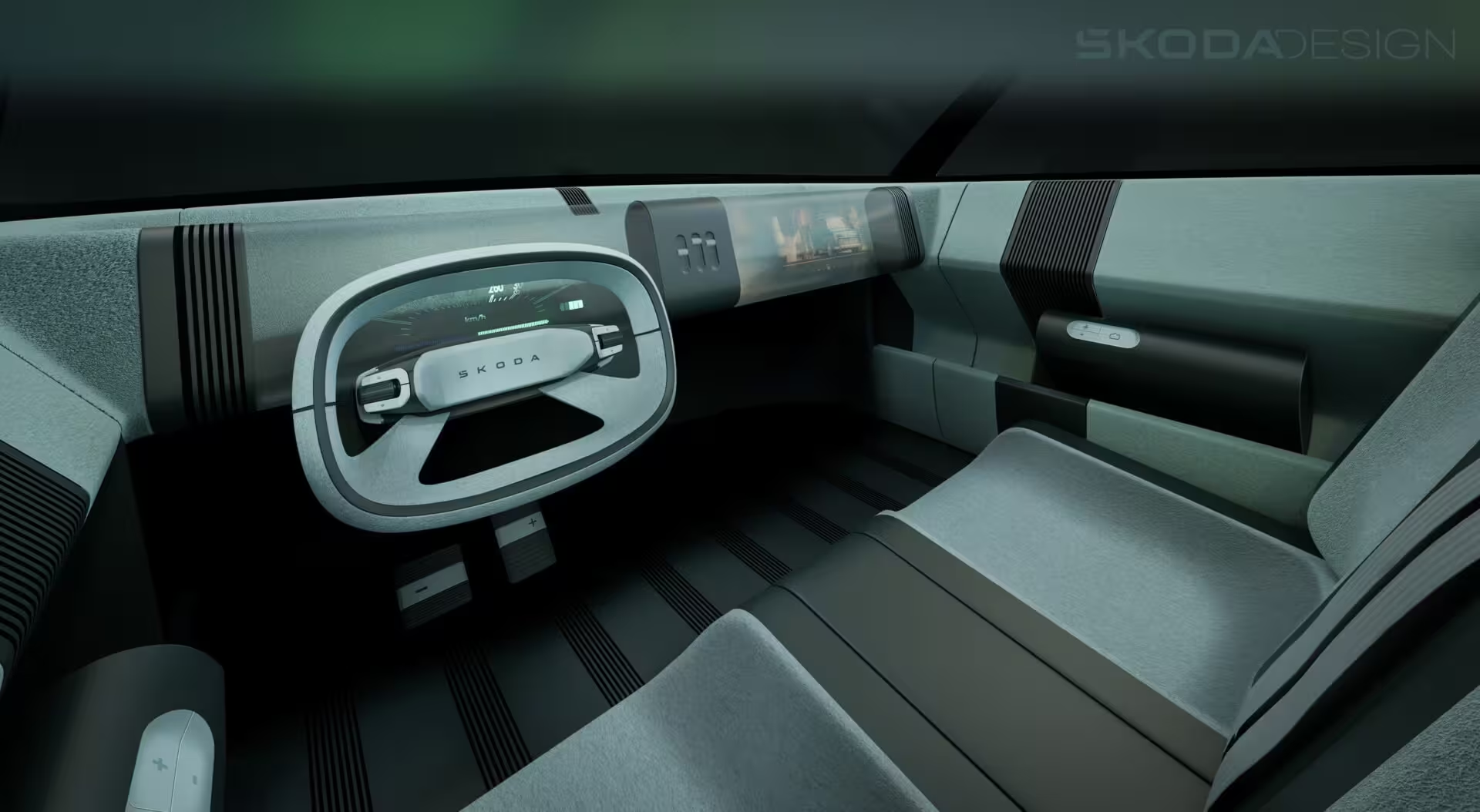
Small project, big ideas
Skoda reports that the entire concept was designed in roughly a month — a reminder that digital creativity can be fast and radical. While the 1000 MBX in this guise will never leave the screen, the exercise matters. It stretches Skoda's design language, reminds the public of the brand's history, and suggests how small cars of the past could be repackaged for an electric future.
Highlights:
- Digital-only reinterpretation of a rare 1960s Skoda coupe.
- Modern Solid design language with brutalist cues and EV-specific details.
- Flexible 2+2 interior that converts into a two-seater for more cargo space.
- No plans for production, but clear influence on future brand direction.
Quote-worthy takeaway: the 1000 MBX concept proves that heritage can be a springboard for bold, modern ideas — even if they live only online.
Whether you're into classic European coupes, forward-thinking EV packaging, or simply intrigued by what designers can do with a blank digital canvas, Skoda's 1000 MBX revival is a compact study in how past and future can collide creatively.
Source: autoevolution
Comments
mechbyte
Is this even true? bench seat and rear-hinged doors sound neat but practical? The bike-in-trunk bit sells it a bit more... still feels like a style exercise.
v8rider
Whoa, Skoda went full brutalist. Muscle vibes without shouting - kinda brilliant. Wish it was real tho, that glass cabin sounds wild. Bit frustrating.

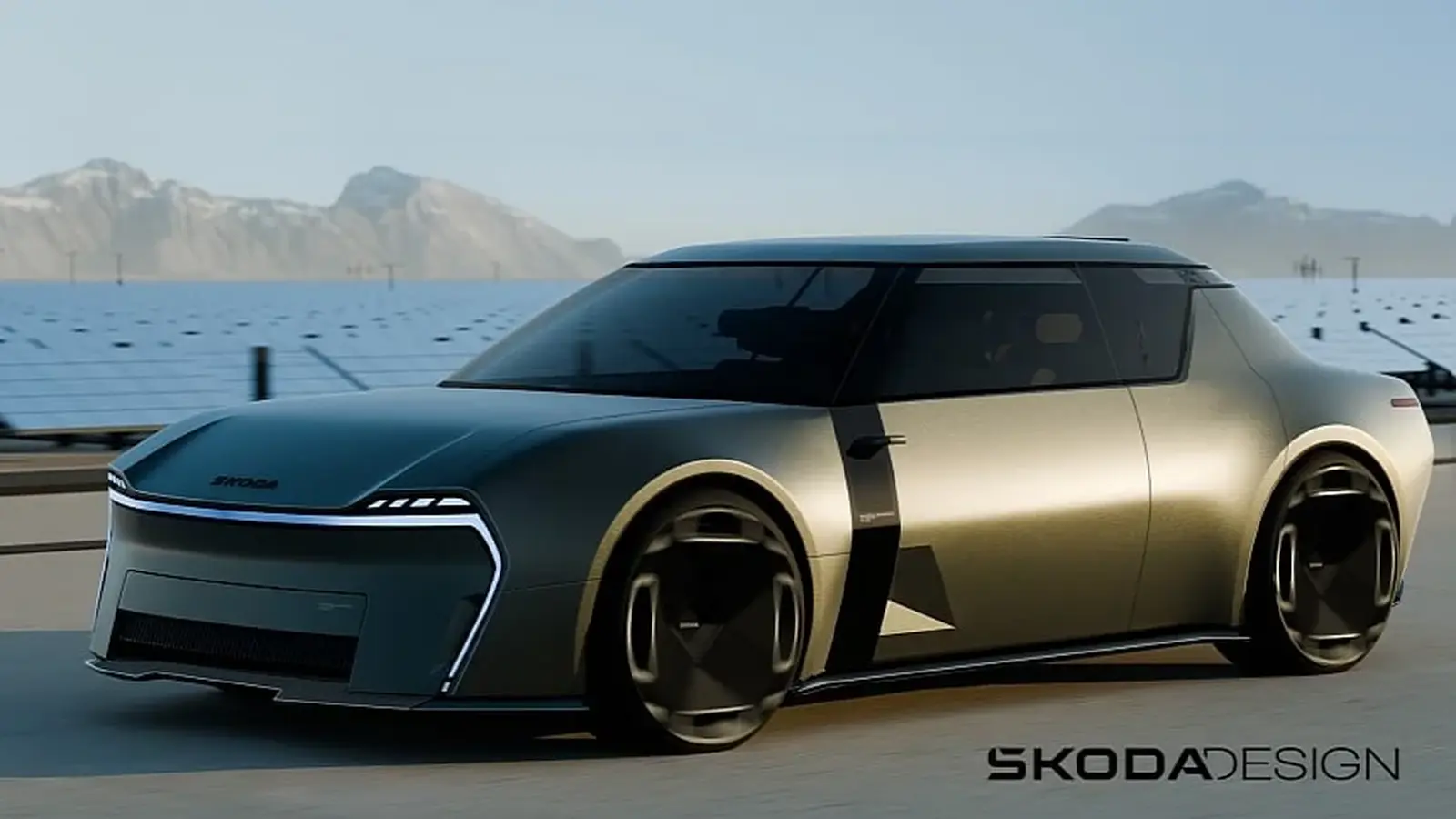
Leave a Comment